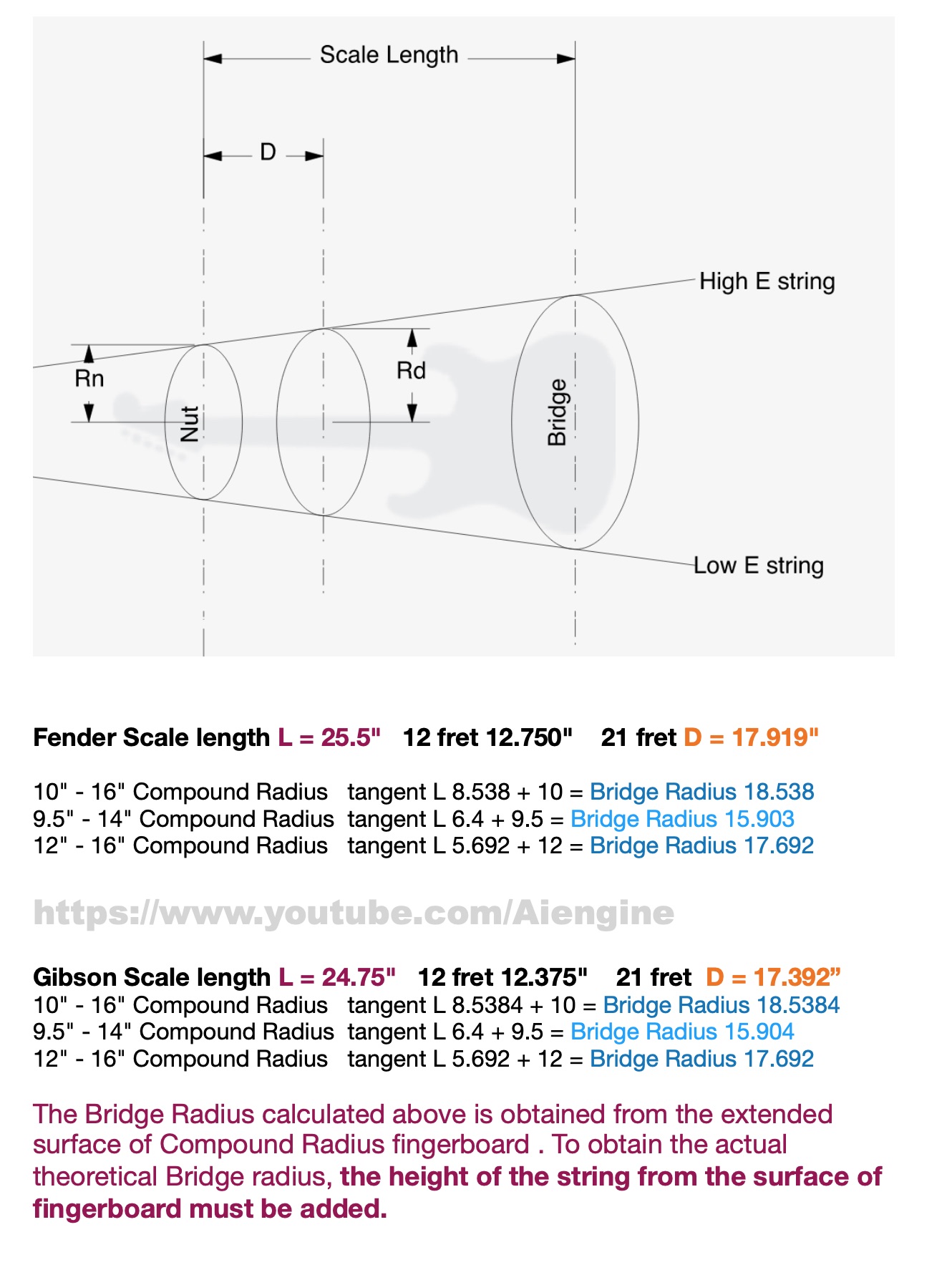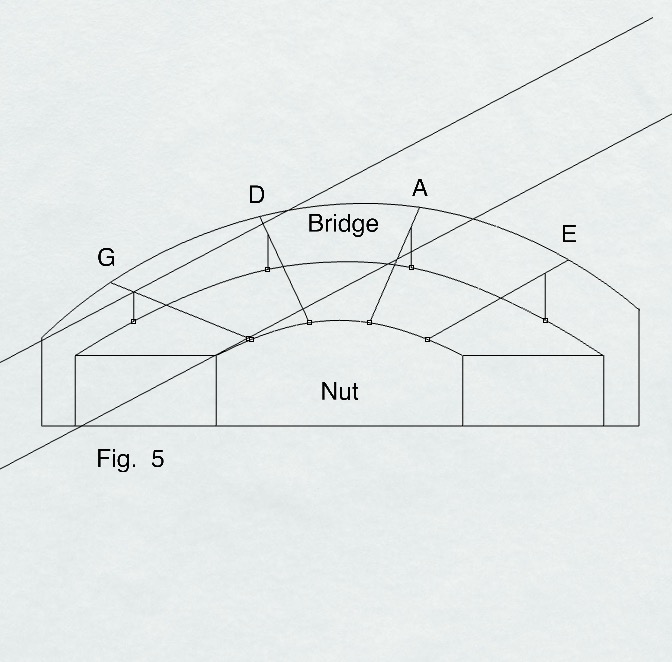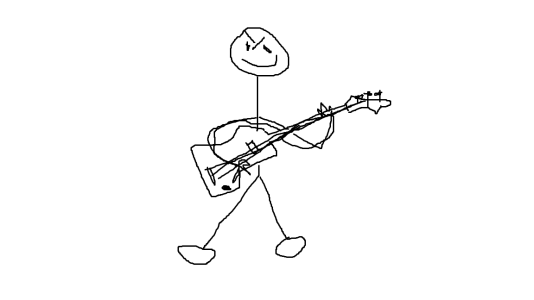stratamania
Mythical Status
- Messages
- 12,280
Maybe if your fretboard went all the way to the bridge, but it doesn't. Whatever fret you adjust your string height (typically the 12th), that radius needs to match your bridge radius. It is a non-issue with bridges that have individually adjustable string saddles.
A compound radius is a truncated cone. So a cone has a point and a base. A compound radius fretboard (or actually more correctly called a progressive radius) starts and ends somewhere along that length of a cone, and the strings continue to the bridge, at which point the radius is greater or flatter. So to correctly set your string height at the 12 fret in an arc that will match the radius of the board at that point, or any other fret as you mention which will be a different radius, the bridge will end up with a flatter radius for optimum set up.
There are good explanations of this here at the below links.
Last edited:





